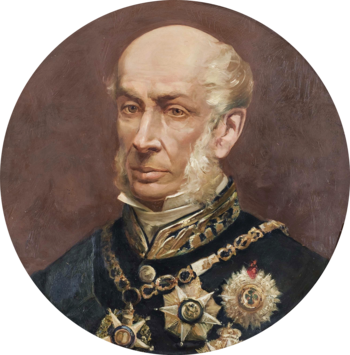
The Metropolitan Patriarchate of Lisbon is a Latin Church ecclesiastical territory or patriarchal archdiocese of the Catholic Church in Lisbon, the capital of Portugal.

The title duke of Terceira, de juro e herdade was created by decree of King Pedro IV of Portugal, on 8 November 1832. António José de Souza Manoel de Menezes Severim de Noronha, 7th Count of Vila Flor, de juro e herdade, and 1st Marquis of Vila Flor, was the first holder of the title.
José Maria O'Neill, was the titular head of a branch of the Clanaboy O'Neill dynasty, whose family has been in Portugal since the 18th century.

Avintes is a Portuguese civil parish in the municipality of Vila Nova de Gaia. The population in 2021 was 10,838, in an area of 8.82 km2. It is known in Portugal as "Terra da Broa", meaning "Land of the Broa", referring to the Broa de Avintes, a typical farmhouse bread widely consumed in Northern Portugal, which originated in Avintes.
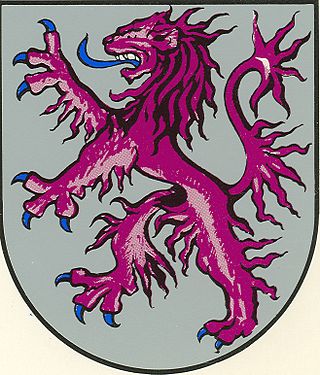
Count of Portalegre is a Portuguese title of nobility created by Letters Patent dated 6 February 1498 by King Manuel I of Portugal granted to D. Diogo da Silva.
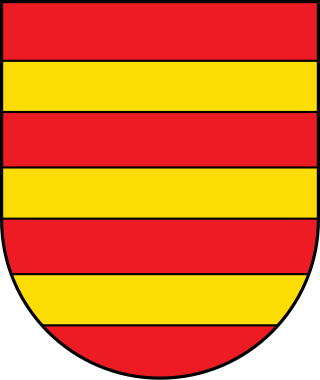
Count of Torre was a Portuguese title of nobility created by a royal decree, dated from July 26, 1638, by King Philip II of Portugal, and granted to Dom Fernando de Mascarenhas, Lord of Rosmaninhal.

D. António de Almeida Soares de Portugal, 1st Count and 1st Marquess of Lavradio, 4th Count of Avintes, Governor General of Angola and Viceroy of Brazil. Born in Lisbon, Portugal on 1 May 1701; died in São Salvador da Bahia, Brazil on 4 July 1760. The first Marquess of Lavradio was a prominent Portuguese statesman and the head of an established noble family.
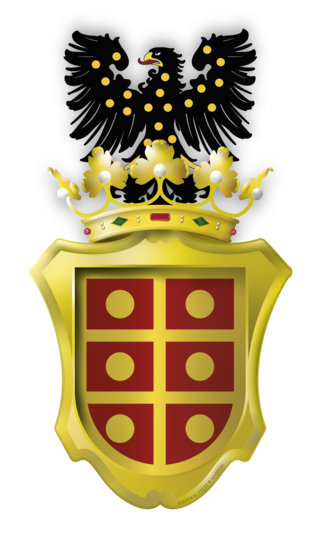
Marquess of Lavradio is a Portuguese title of nobility created by Letters Patent of King José I of Portugal on 18 October 1753 for D. António de Almeida Soares de Portugal, 1st Count of Lavradio and 4th Count of Avintes.

D. Luís de Almeida Portugal Soares de Alarcão de Eça e Melo Silva Mascarenhas, 2nd Marquis of Lavradio and 5th Count of Avintes was a Portuguese nobleman and colonial administrator, Viceroy of Brazil from 1769 to 1778. He was the second ruler of the colony after its capital was moved from Salvador to Rio de Janeiro in 1763. He was the son and heir of the 1st Marquis of the same title, D. António de Almeida Soares e Portugal and his wife, D. Francisca das Chagas Mascarenhas, sister of the 8th Duke of Aveiro. During the Spanish invasion of Portugal in 1762, he commanded the 1st Cascais Infantry Regiment as its Colonel.

The Castle of Abrantes overlooks the city of Abrantes, in the municipality of Abrantes in the district of Santarém, Ribatejo, divided between the two civil parishes of São João and São Vicente. It was part of the Reconquista fortifications that made up the Linha do Tejo, a line of castles and outposts during the Middle Ages, recently integrated into a tourist region called the Região de Turismo dos Templários.
The Castle of Barbacena is a former-medieval castle/fort in the civil parish of Barbacena e Vila Fernando, municipality of Elvas in the Portuguese Alentejo, classified as a Property of Public Interest.

The Forty Conspirators, were a Portuguese nationalist group during the Iberian Union. The Conspirators were composed of forty men of the Portuguese nobility, and many clergy and soldiers. Their goal was to depose the House of Habsburg king, Philip III.

Lourenço José Boaventura de Almada (1758–1815), 13th Count of Avranches and 1st Count of Almada, by regal charter on 29 April 1793 to him and his descendants.

Count of Avintes is a Portuguese title of nobility created by Letters Patent of King Afonso VI of Portugal on 17 February 1664 for D. Luis de Almeida, 5th Lord of Avintes. The title was conferred in perpetuity upon the 4th Count by King José I of Portugal in the same document by which he was elevated to the Marquessate of Lavradio, later confirmed by Letters Patent dated 29 August 1766.

Tomás de Almeida was the first Patriarch of Lisbon, formerly Bishop of Lamego and later of Porto. Pope Clement XII elevated him to the cardinalate on 20 December 1737.
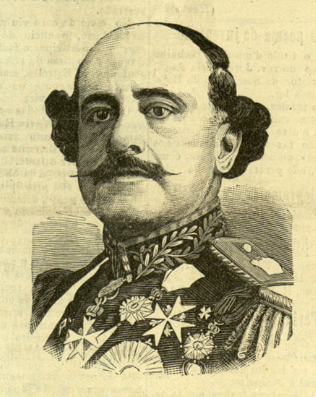
D. José de Meneses e Távora Rappach da Silveira e Castro, 2nd Marquis of Valada was a Portuguese nobleman and politician aligned with the conservative Regenerator Party. Well-regarded as a man of great erudition and a notable parliamentarian, the Marquis of Valada was the protagonist of a well-publicised scandal in 1881, after his homosexuality became a matter of public knowledge.

The Constituent Cortes of 1820, formal title The General and Extraordinary Cortes of the Portuguese Nation, also frequently known as the Sovereign Congress or the Cortes Constituintes Vintistas, was the first modern Portuguese parliament. Created after the Liberal Revolution of 1820 to prepare a constitution for Portugal and its overseas territories, it used a different system from the traditional General Cortes for choosing representatives, and the three traditional feudal estates no longer sat separately. The Cortes sat between January 24, 1821 and November 4, 1822 at the Necessidades Palace in Lisbon. The work of the Constitutional Cortes culminated in the approval of the Portuguese Constitution of 1822.
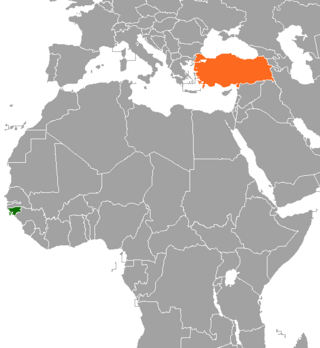
Guinea-Bissau–Turkey relations are the foreign relations between Guinea-Bissau and Turkey. Turkey has an embassy in Bissau. Guinea Bissau has an embassy in Ankara.

Count of Torres Vedras is a Portuguese title of nobility created by King Felipe III of Portugal, possibly in 1626, for D. João Soares de Alarcão, 9th Alcaide-mor of Torres Vedras and Governor General of the then Portuguese enclave of Ceuta.

